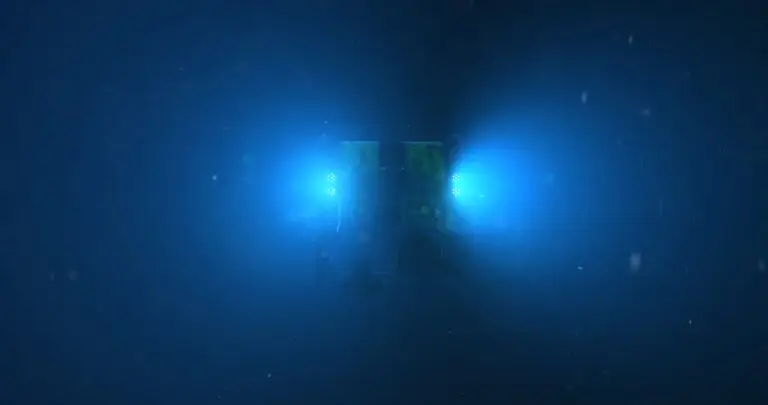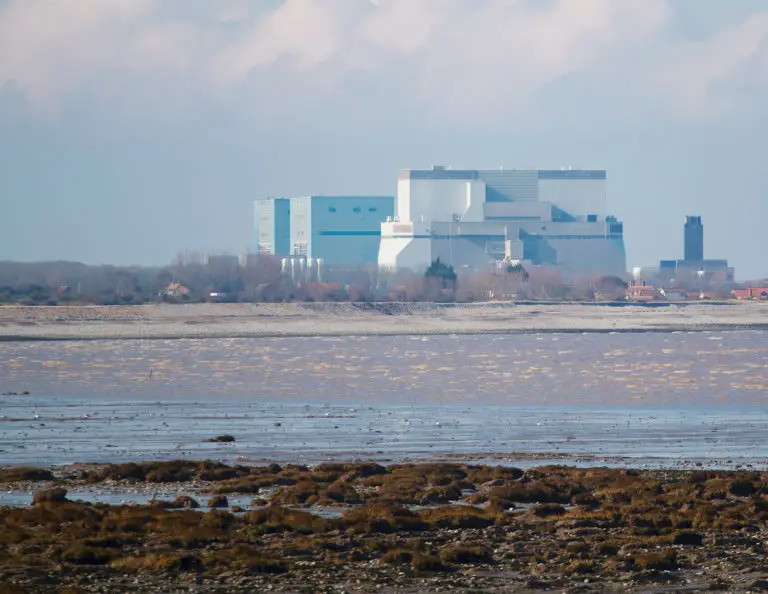Over the last decade, the health of the Severn Estuary’s biodiversity has dropped significantly. The latest Salmon Stock Assessment for 2022 shows that wild Atlantic salmon stocks remain a cause for concern in England, with results showing a marginal improvement from the previous year.
With biodiversity threatened, environmental protections that are already approved by the Government, and are UK best practice, should be top priority. The Acoustic Fish Deterrent meets all these requirements.
If power plants such as Hinkley Point C and other large industrial facilities do not take steps to deter fish, intakes can become blocked with large fish inundations and cause disruption.
But this is not the only concern. The damage done to these fish can have a major impact on the ecosystem, particularly for critically endangered species. Even in sustainable populations, there are major ethical concerns with allowing large numbers of fish to be harmed and die when an alternative is available.
Operational efficiency is often a topic of discussion when it comes to Acoustic Fish Deterrents (AFDs). For the protected Thwaite Shad, the efficiency for deflection is near 100%. And for Salmon and Trout over 50%. An AFD can save billions of fish over the course of Hinkley Point C’s 60-year lifespan, and before the decision by the Secretary of State had been recommended to remain by the Hinkley Point C Stakeholder Reference Group to the Welsh Government.
What are the environmental implications of AFD at Hinkley Point C?
Without a sound-based behavioural system in place to provide an effective deterrent, a fish recovery and return (FRR) system would be the primary means of protection. The FRR effectiveness is directly linked to the AFD’s inclusion and there is no proof the FRR will work without it.
The FRR system would only protect those fish strong enough to survive a trip along a two mile long intake and FRR itself, leaving fragile species unprotected. Environmental groups believe up to half a million fish could be sucked into the intake at Hinkley Point C each day, many of which would not survive being returned to the estuary.
Arguments against this level of damage were based in part on incomplete data. The twaite shad, for example, is currently present in low numbers. But analysis of historical data reveals a much greater presence in warmer years, such as in the early 1990s.
As climate change contributes to warmer waters and ongoing habitat restoration measures bear fruit, biologists expect shad levels to rise. And this is just one example.
Fish communities in the estuary may undergo dramatic changes over the lifetime of the Hinkley Point C Station, and it cannot be assumed that impact assessments based on recent data adequately characterise the risks.
The requirement under the DCO to install AFD technology is in part an insurance policy to future-proof environmental protection at the site, and we are glad the government has upheld this opinion. Visit Fish Guidance Systems for more information about AFDs.
Preserving the Development Consent Order
The Hinkley Point C fish protection strategy is based in part on scientific reports and advice prepared by Dr. Andrew Turnpenny, an internationally recognised specialist in the field who has been involved in the Hinkley Point C project since its very beginning.
The fish protection strategy identifies the particular risks connected with direct seawater cooling, in which the estuary will extract substantial amounts of water and transfer it through plant cooling condensers. Direct seawater cooling is considered the Best Available Technology (BAT) across Europe, a view challenged by environmentalists but confirmed in an Environment Agency report. The report recommended that to defend the continued BAT status of direct cooling, it should be coupled with new environmental protection measures such as Acoustic Fish Deterrents (AFD) and Fish Recovery and Return (FRR) technology.
Our Latest Acoustic Fish Deterrent News

New ROVs can handle maintenance of Hinkley Point C and Sizewell C AFD according to manufacturers
When the tide is high, dangerous things can happen – and when you are building a new nuclear power plant in an estuary where the tidal forces are some of the highest in the world, mitigating risk is the highest priority. Luckily, advancements in technology can make the most dangerous

Dr David Lambert and Dr Andy Turnpenny Speak at Hinkley Point C AFD Appeal Inquiry
On June 8th Dr David Lambert, Managing Director of Fish Guidance Systems, and eminent fish biologist Dr Andy Turnpenny spoke alongside environmental experts to detail the reasons why an AFD system should be installed at Hinkley Point C. Their full statements are outlined below. Statement From Dr David Lambert, Managing
Twaite shad Set for Return to Severn Estuary but Nuclear Plant Creates Risk
The rare and protected twaite shad are being reintroduced to the Severn thanks to a conservation project by the Canal & River Trust. The project focuses on allowing the fish to return to their breeding grounds but issues remain in the estuary – where the fish spend the majority of
Effect on Fish Populations by Sizewell C and Hinkley Point C Nuclear Plants Being Brought to National Attention
April has been a huge month for the fight to ensure proper environmental protections are put in place at the UK’s next generation of nuclear power plants. Several national newspapers, including in The Guardian and The Independent, have highlighted the serious issues facing the cooling water intakes of nuclear plants